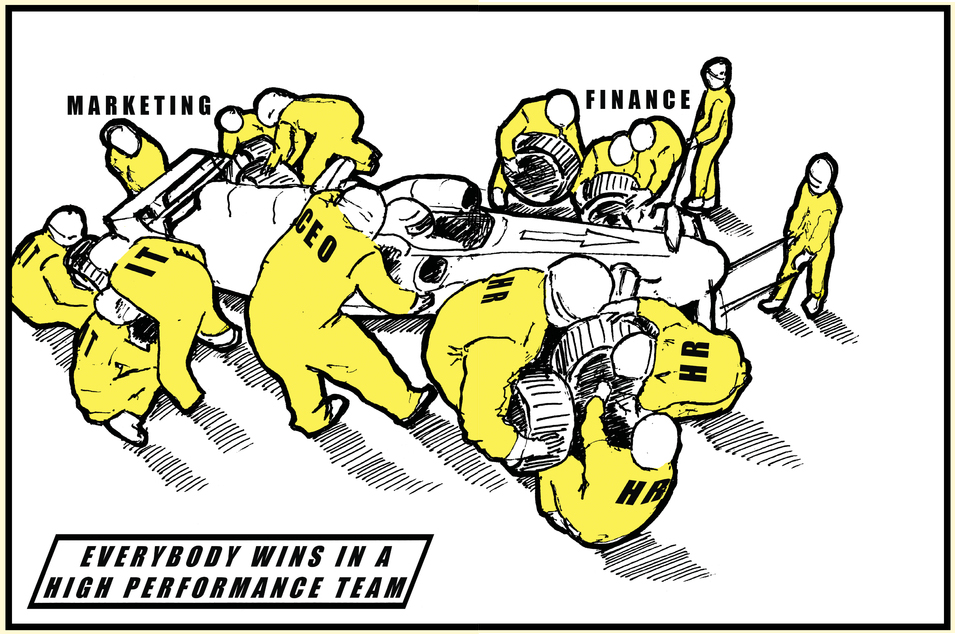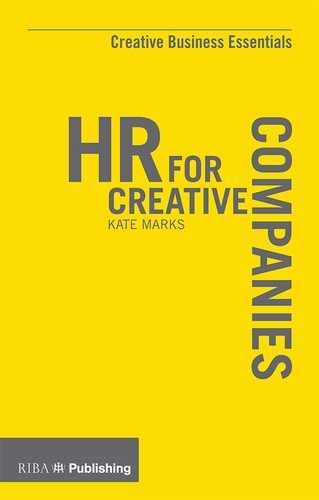08 Conclusion
CONCLUSION
The previous chapters should have helped you to become significantly more confident in understanding how the different elements of HR fit together to work to the benefit of your practice. It is clear that prevention is preferable to cure when it comes to people and people management. Above all, nothing can beat common sense and communication.
Some Thoughts about the Future
There remains an air of ‘let’s wait and see’ about the market. However, at the time of writing employees are generally more positive about prospects. They are scanning the jobs market to see what new and better paid opportunities may be out there, particularly because many may not have seen an increase in salary for a while – some have even seen their salaries reduce. As a consequence, companies that have some great new projects and are in a position to outbid their competitors for the highest quality candidates may benefit. Alternatively, employees may present their current employer with an offer of employment elsewhere which is then counter–offered by their present employer – therefore increasing the employee’s salary without the risk of starting again in a new and different environment. Equally, employees who feel they were ill–treated by their employers during the recession may take the chance of a more positive climate to move on.
As with previous recessions, architects and designers will have left the profession and will be working in a new career or may have left the country in search of work. The long-lasting effect of this will be a skills gap and a dearth of high–quality candidates to go around in our creative companies. A recruitment agency recently told me: ‘As a candidate you can’t get fulfilling work in your chosen design practice; and as an office you can’t find the calibre of staff – which in essence means you get compromises’. The market may have picked up with some level of enthusiasm, but now companies are realising that it’s not as it was and they are faced with a range of new challenges. As the agent put it: ‘It’s like being a cheese lover but all you can get is Kraft triangles.’
Putting enlightened HR practices into place will help you to face these challenges.
Drawing It All Together
I am not advocating that all companies should have an HR manager, but certainly someone with some basic HR knowledge should assume responsibility for the function. This book will at least provide you with that basic knowledge and will ensure that you are aware of when you may need to seek greater expertise.
When you are approaching an HR or a people–related matter be sure to use the best information resources.
The seminal sources for employment legislation and people-related matters are:
If you are in any doubt about points of law, check on these sites. They will always be the most up-to-date sources of information.
You may find other information via a search engine, but you can never be sure if it is current – or indeed if it relates to the UK. I have on several occasions been challenged about a change to legislation or questioned about a business practice, only to discover that the original query came from a Canadian website or an article written about working life in the United Arab Emirates.
If in doubt, seek advice from an HR professional or employment lawyer. Use common sense and treat all staff consistently and fairly, and you can’t go far wrong. Firefighting is rarely the best option.
The benefits of enlightened HR practice:
- > Saves time and therefore money
- > Minimises risk of claims and fines
- > Clarifies company ethos and culture
- > Attracts professional staff through professional environment and standards
- > Retains staff, giving them clear career progression opportunities through clarity of process.
The disadvantages of bad HR practice:
- > Is restrictive
- > Focuses on what you can’t do rather than what you can do
- > Is process driven
- > Lacks flexibility
- > Is commercially unaware.
Why Should the Architecture Profession Support HR within Their Practice Structure?
You entered the profession to make a positive impact on the built environment. Your focus may be design, or technical matters, or job running. This is your speciality and skill.
Why would you want to spend your precious time focusing on something about which you know only a little, you don’t enjoy and with which you do not feel confident? Doesn’t it make sense to seek an expert to carry out what is necessary?
As a practice owner, partner, director or manager, you can’t completely

devolve responsibility for HR, but you can certainly delegate the routine administrative elements, and seek and follow the input of your chosen HR professional. This will allow you to focus on what you are good at and enjoy, and enable the HR person to do the same.
HR professionals like addressing issues before they become a problem. Following the proper process is second nature to us. We just need your support to do our jobs properly.
Please don’t wait until a problem has arisen before you tell us. We can get rid of the mole hills before they become mountains. Treat us with respect as fellow professionals and we can support you, advise you, watch your back, protect you from most risk, and help you to gain and keep a reputation as a caring, sharing employer of choice!
The Future of HR
The future of HR is bright. We are finally beginning to be taken seriously as a profession. It is a massive step forward that HR and employment practice is now often a part of the professional practice curriculum in many schools of architecture. The shame is that it is not compulsory. I still do not understand why, in a profession where people – what is in their heads and what they can contribute – are an essential part of the unique nature of each company, it is the people elements of the business are often secondary to IT and far far behind finance. It would be unrealistic for financial concerns to be ignored in favour of people; a business has to make money. However, aren’t people as important as money and machines to the success of your practice?
HR is moving from a simple administrative function to having the ability to make a significant positive impact on your business. Think about the models that were mentioned in Chapter 2. Although the ability to maintain accurate records, focus on detail and manage acres of paperwork is a skill in itself, nevertheless increased value lies in enhancing your reputation in the marketplace through improving employee retention and reward, involvement with local universities, and community outreach – among other initiatives.
You want to be better than your competition. You want to be an attractive and engaging place to work. You would like to give something back to the profession and to society.
HR is in a prime position to help you do that. We walk and talk with your people; we listen, we solve problems, we make suggestions for improvement or offer innovative ideas to make your employees happier, healthier and so more effective and efficient.
The future has to be about the architecture profession and HR profession working together to the benefit of both.
